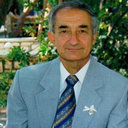Eosinophilic responses to stent implantation and the risk of Kounis hypersensitivity associated coronary syndrome.
キーワード
概要
The use of drug eluting stents constitutes a major breakthrough in current interventional cardiology because it is more than halves the need of repeat interventions. It is incontrovertible that coronary stents, in general, have been beneficial for the vast majority of patients. A small increase in thrombosis, following DES implantation, is offset by a diminished risk of complications associated with repeat vascularization. However, late and, especially, very late stent thrombosis is a much feared complication because it is associated with myocardial infarction with increased mortality. Despite that stent thrombosis is thought to be multifactorial, so far clinical reports and reported pathology findings in patients died from coronary stent thrombosis as well as animal studies and experiments, point toward a hypersensitivity inflammation. The stented and thrombotic areas are infiltrated by interacting, via bidirectional stimuli inflammatory cells including eosinophils, macrophages, T-cells and mast cells. Stented regions constitute an ideal surrounding for endothelial damage and dysfunction, together with hemorheologic changes and turbulence as well as platelet dysfunction, coagulation and fibrinolytic disturbances. Drug eluting stent components include the metal strut which contains nickel, chromium, manganese, titanium, molybdenum, the polymer coating and the impregnated drugs which for the first generation stents are: the antimicrotubule antineoplastic agent paclitaxel and the anti-inflammatory, immunosuppressive and antiproliferative agent sirolimus. The newer stents which are called cobalt-chromiun stents and elute the sirolimus analogs everolimus and zotarolimus both contain nickel and other metals. All these components constitute an antigenic complex inside the coronary arteries which apply chronic, continuous, repetitive and persistent inflammatory action capable to induced Kounis syndrome and stent thrombosis. Allergic inflammation goes through three phases, the early phase, the late phase and the chronic phase and these three phases correspond temporally with early (acute and sub acute), late and very late stent thrombosis. Bioabsorbable allergy free poly lactic acid self expanding stents, nickel free stainless steel materials, stent coverage with nitric oxide donors and antibodies with endothelial progenitor cell capturing abilities as well as stents eluting anti-inflammatory and anti-allergic agents might be the solution of this so feared and devastating stent complication.


